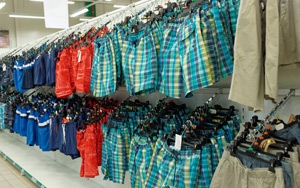Commentary
U.S. Retail To Spend Nearly $6.2 Billion In Search Advertising
- by Laurie Sullivan , Staff Writer @lauriesullivan, June 2, 2015
 Small and medium-sized retail businesses with less than 99 employees might hold
back investments in paid-search advertising this year, but according to an eMarketer study released Tuesday U.S. retail spend will grow at a compound annual growth rate (CAGR) of 12.3% to
reach $12.91 billion in 2015 and $19.98 billion by 2019.
Small and medium-sized retail businesses with less than 99 employees might hold
back investments in paid-search advertising this year, but according to an eMarketer study released Tuesday U.S. retail spend will grow at a compound annual growth rate (CAGR) of 12.3% to
reach $12.91 billion in 2015 and $19.98 billion by 2019.
Search marketing investments vary, per The U.S. Retail Industry 2015: Digital Ad Spending Forecast and Trends from eMarketer. The study is part of a Digital Ad Spending Benchmarks by Industry report series.
The retail industry will invest heavily in search engine marketing, about $6.18 billion this year. eMarketer's report estimates the automotive industry will invest $3.33 billion in search engine marketing. Computing products and consumer electronics will invest $2 billion, followed by consumer product goods at 1.33 billion; entertainment, $74 million; financial services, $3.4 billion; and health and pharma, $72 million.
Mobile continues to prove itself. It must because marketers keep spending more in this media. While retail will invest the most into digital advertising within the next few years, most of it will go toward mobile this year, about 51.5%, but not more than entertainment, which will infuse 53.5%, per the report.
A report from eTail called mobile "the glue" that gives consumers a better shopping experience. The trend report -- conducted with help from Sailthru, Criteo, and Soasta -- suggests that while 78% of marketers know how people experience their site on mobile devices, only 2% believe it's important to target ads to consumers based on their precise location, and 34% said it's not important or not very important at all.
Marketers participating in the eTail study do not view paid search or search engine optimization as an important factor in terms of where they plan to invest marketing dollars. In fact only 6% do. About 38% pointed to user experience, followed by time to market at 25%, Web app personalization at 19%, and CRM and customer loyalty programs at 12%.



